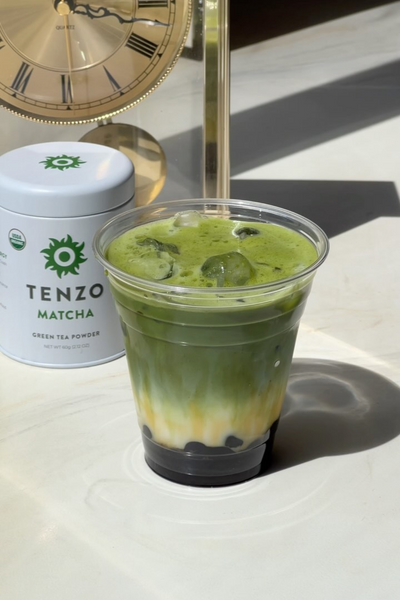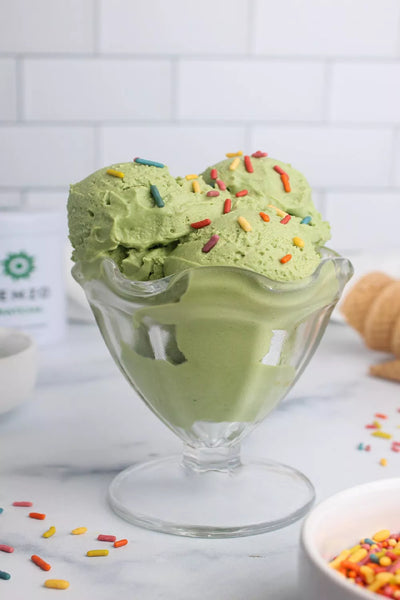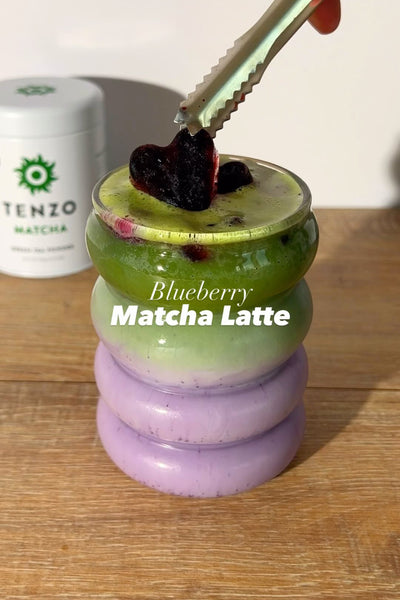My Journey to Matcha
Posted on January 05, 2021 | by Madison Dipboye

- Dustin Watten,
USA Men's Volleyball Team
Growing up in Southern California, beneath almost eternal beams of sunshine, I never drank coffee, and that’s because I never felt tired. Throughout my childhood and collegiate career, I've always had more than enough energy, thanks to 365 days of access to the sun and a relatively high UV index.
But, fast forward to my first professional season abroad. I found myself in Turku, Finland, almost the complete opposite of Southern California. I didn’t know much about Finland before jumping on the plane to begin my first season abroad, but I quickly realized that their winters are arguably the most intense in the world.
One of the most debilitating aspects of the Finnish winter, is the amount of sun and vitamin D that everyone misses out on. In the south, where I was located, the daylight in December only lasts for 6 hours. This was a stark contrast from my previous life in Southern California, and it was a difficult environment to adjust to, but I adjusted accordingly with the local tradition of coffee... lots and lots of black coffee.
Escape to Caffeine

It was harmless and fun at first, but caffeine quickly became a sharp addiction, one that I didn't even notice at first. However, as I aged into my later twenties, I started to feel the dark side of coffee, as my nights of deep sleep, morphed into wrestling competitions with my sheets – fighting for, but ultimately losing precious REM sleep.
I knew something had to change, but in my mind “I needed” my morning coffee to get me going, to wake me up during the cold European winters. I also “needed” the late afternoon coffee to prop me up and get myself going for our 6pm training later that night.
Understanding the Dark Side of Caffeine
Every moment that you are awake, your brain is producing a chemical called, adenosine. You can think of it as a timer that regulates how long you're awake for. The more adenosine accumulates, the more your brain craves sleep. So naturally, the more adenosine your brain produces, the more tired you feel.
The caffeine in coffee is often the top choice for combatting the sluggish feeling of accumulating adenosine, which makes sense. Caffeine works by latching onto adenosine receptors and acting as a mask against the tiring effects of adenosine. But, caffeine doesn't actually stimulate these receptors, they just block them. And, as such, although you may feel more awake and alert after drinking coffee, your brain is still being overwhelmed with adenosine.
What was starting to become very problematic for me was the “half life” of my afternoon coffee. Half life is the term used to refer to the amount of time it takes for your body to filter out 50% of a drug. Caffeine has an average half life of 5-7 hours, so if you have a coffee around 5:30 pm this means that by 11:30 pm, 50 percent of the caffeine from your coffee may still be active and circulating throughout your brain tissue. So although you may be thinking it's bedtime, your brain is still being deprived of the chemical it needs to sleep.
Caffeine Crash
Meanwhile, even though you can't feel the effects of it, thanks to caffeine, adenosine is continuing to build up. But eventually, your body will process all of the caffeine and send a surge of adenosine flowing towards those previously blocked receptors. And this is what causes the infamous caffeine crash. And, unless you drink another cup of coffee to delay this even further, you'll likely be even more tired than you were before you had your coffee.
Introduction to Matcha
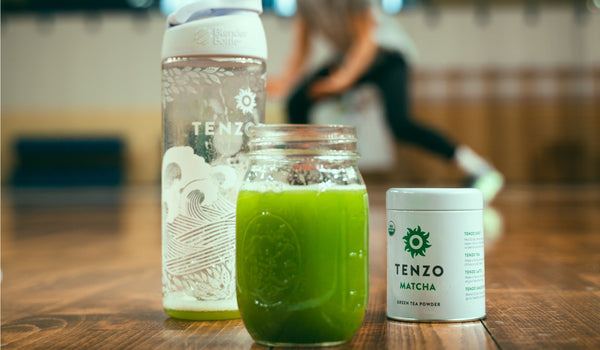
In the summer of 2016, by chance I bumped into Tenzo co-founder, Robbie Page, and my relationship to caffeine got a huge upgrade. I knew of Robbie, who was previously playing on the professional beach tour but I had never meet him, until we happened to end up on the same 4man beach team one afternoon.
We talked about volleyball, health and he brought up this mysterious word I had never heard of before “matcha”. He prefaced it with “I know you like green things and nutrition” and that was enough to tickle my curiosity as I am always looking for the best way to fuel myself as an athlete. I began experimenting with it by replacing my morning coffee with this mysterious green tea. I was interested in a better way, but I was still hesitant to abandon my trusty coffee companion. But I started to notice something odd after my mornings with matcha – no afternoon crash.
Caffeine but better: L-theanine
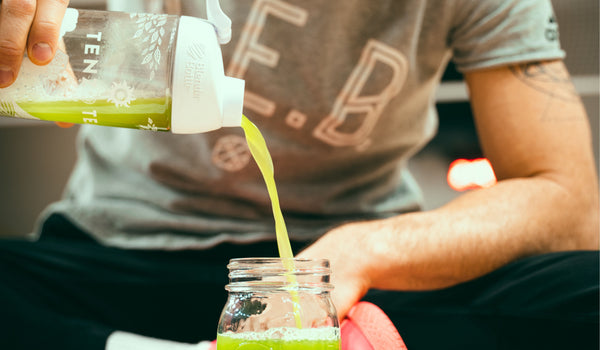
L-theanine is a fascinating amino acid, found only in the bay bolete edible mushroom and Camellia sinensis plant, otherwise known as the green tea plant. The shade growing style used for the camellia sinensis leaves intended for matcha, helps to concentrate L-theanine and gives matcha up to 5x the L-theanine content of regular green tea.
After being absorbed into our bloodstream, L-theanine crosses the blood-brain barrier and enters the central nervous system, where it begins targeting and boosting neurotransmitters like Serotonin, Dopamine, GABA, and Norepinephrine. The L-Theanine in matcha helps calm down the nervous system, reduces anxiety, and induces calm by increasing the neurotransmitters that balance our moods and control serotonin & dopamine. Long story short, matcha make us feel good.
And, unlike coffee, I wasn’t experiencing a crash in the afternoon. It was the epiphany of a lifetime.. caffeine without the crash. With matcha, I no longer needed to rely on an afternoon cup of coffee as a crutch to keep me going. And without the afternoon caffeine hit, I was able to sleep through the night, getting the restorative REM sleep I need to recover as an athlete.
The lesson to learn here is that, on and off the court, there is always a better way – there is always a more mindful, intentional way. My journey from coffee to matcha has changed the way I fuel myself, and I am so grateful for that day in 2016 that collided my path with Robbie and forever changed the way I consume caffeine.






